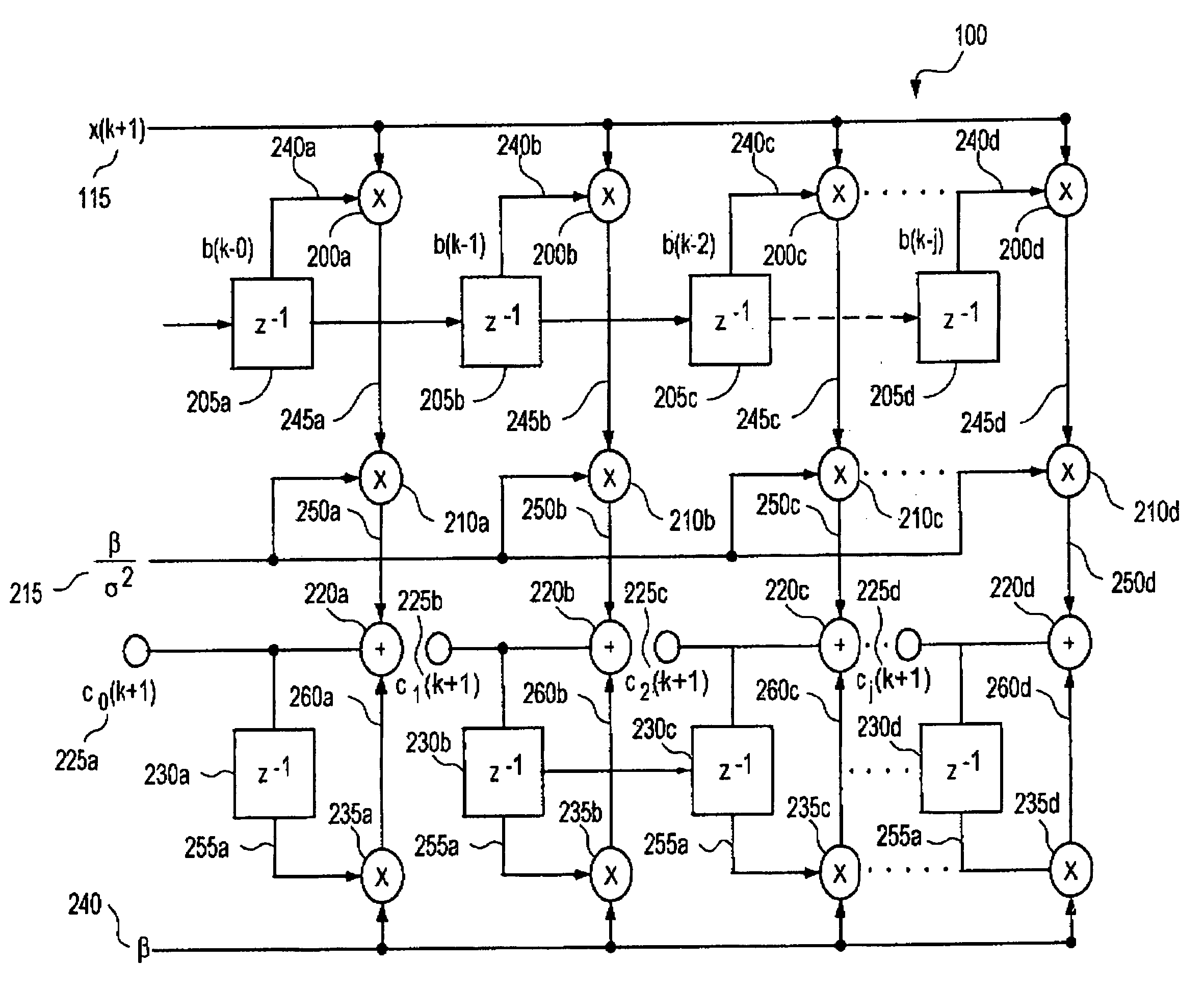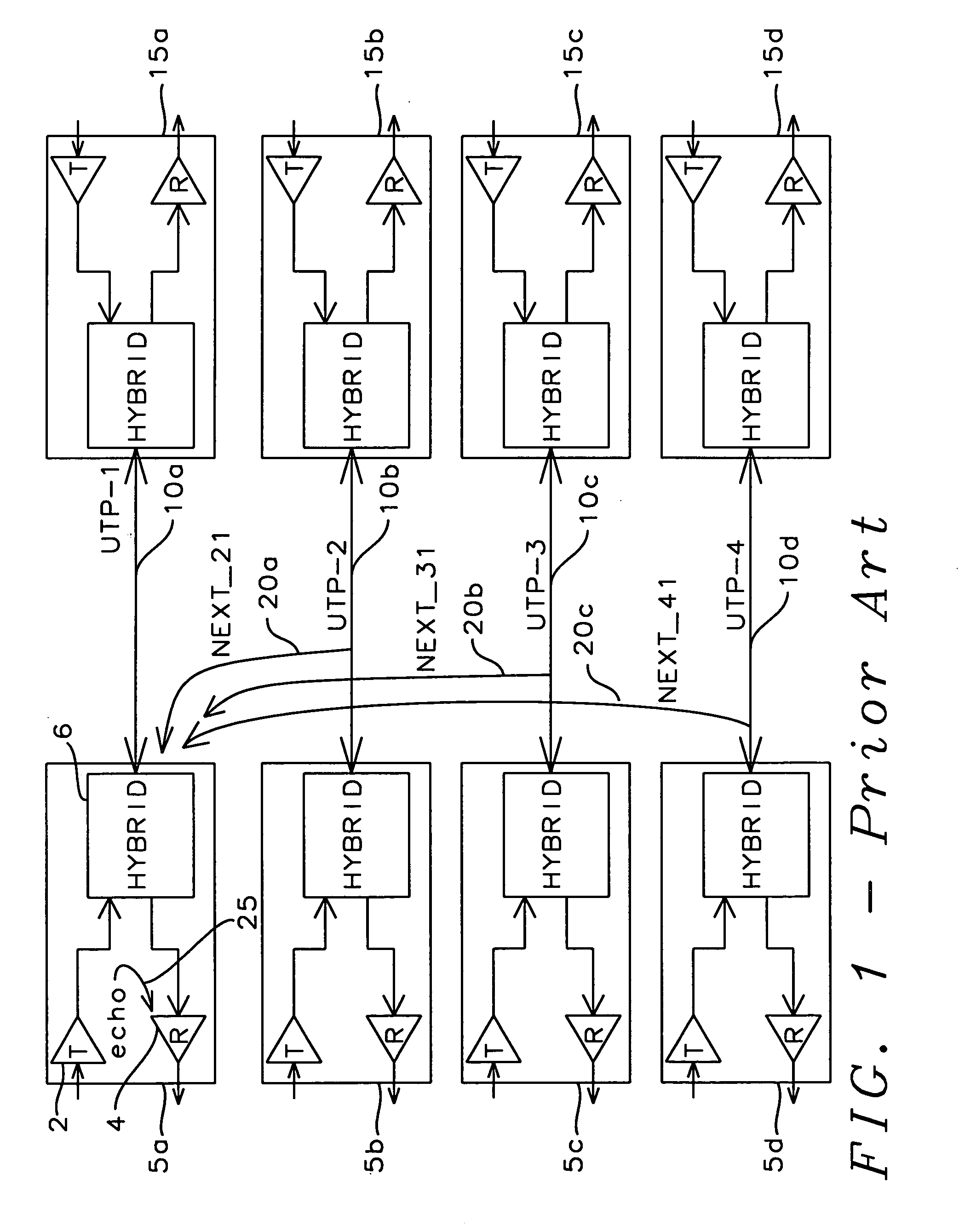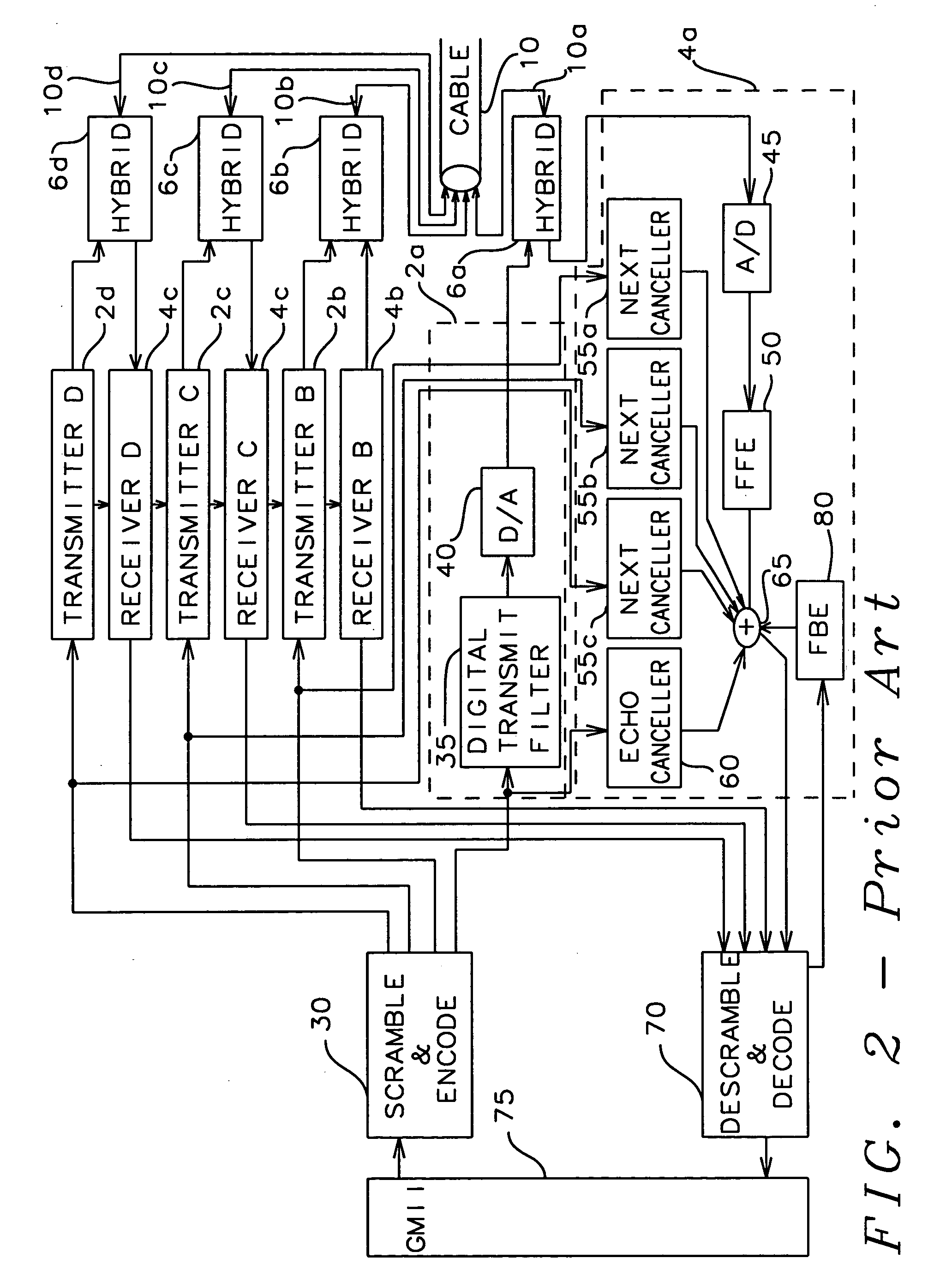Method and apparatus for digital near-end echo/near-end crosstalk cancellation with adaptive correlation
a near-end echo and near-end crosstalk technology, applied in the field of apparatus and methods for signal communication, can solve problems such as signal attenuation, return loss, electromagnetic emission and susceptibility, and can solve the problem of near-end crosstalk interference cancellation and near-end echo interference cancellation
- Summary
- Abstract
- Description
- Claims
- Application Information
AI Technical Summary
Benefits of technology
Problems solved by technology
Method used
Image
Examples
first embodiment
[0070]Refer now to FIG. 5 for a discussion of the correlator 100 circuit of the near-end echo / near-end crosstalk cancellation circuit of this invention. The received signal X(k+1) 115 and the delayed transmitted signals b(k−j) 240a, 240b, 240c, . . . , 240d are the inputs to each of the first multipliers 200a, 200b, 200c, . . . , 200d. The delayed transmitted signals b(k−j) are the outputs of each of the unit delay elements 205a, 205b, 205c, . . . , 205d. The unit delay elements 205a, 205b, 205c, . . . , 205d successively delay the transmitted signal b(k) 120 to form the delayed transmitted signals b(k−j) 240a, 240b, 240c, . . . , 240d.
[0071]The output products 245a, 245b, 245c, . . . , 245d and the first weighting factor (βσ2)
215 are inputs to the second multipliers 210a, 210b, 210c, . . . , 210d. The outputs of the second multipliers 210a, 210b, 210c, . . . , 210d form the weighted products 250a, 250b, 250c, . . . , 250d.
[0072]Each of the new filter coefficients C0 (k+1), . . . ...
second embodiment
[0075]Since the transmit signals b(k) 120 and the received signals X(k+1) 115 are digitized samples of the signals transmitted and received on the communication medium (cable 10 of FIG. 2), the multiplication can be performed with shift registers. Refer now to FIG. 6 for a discussion of a correlator 100 of the near-end echo / near-end crosstalk canceller of this invention.
[0076]The digital form of the transmitted symbol b(k) is the input to each of the first unit delay elements 305a, 305b, 305c, . . . , 305d to form the delayed transmitted symbols 340a, 340b, 340c, . . . , 340d. The sampled digitized received signal 115 and the delayed transmitted signals 340a, 340b, 340c, . . . , 340d are the inputs to the first shifters 300a, 300b, 300c, . . . , 300d. The first shifters 300a, 300b, 300c, . . . , 300d shift the sampled digitized received signal 115 according to the values of the delayed transmitted signals 340a, 340b, 340c, . . . , 340d to form the output products 345a, 345b, 345c, ....
PUM
 Login to View More
Login to View More Abstract
Description
Claims
Application Information
 Login to View More
Login to View More - R&D
- Intellectual Property
- Life Sciences
- Materials
- Tech Scout
- Unparalleled Data Quality
- Higher Quality Content
- 60% Fewer Hallucinations
Browse by: Latest US Patents, China's latest patents, Technical Efficacy Thesaurus, Application Domain, Technology Topic, Popular Technical Reports.
© 2025 PatSnap. All rights reserved.Legal|Privacy policy|Modern Slavery Act Transparency Statement|Sitemap|About US| Contact US: help@patsnap.com



